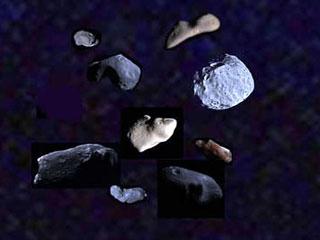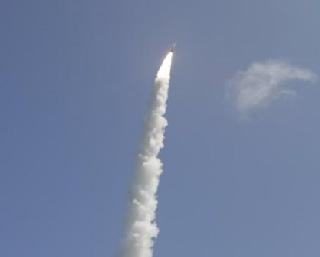
WASHINGTON (PTI): Planetary scientists claim to have discovered evidence that the earliest rocks in the solar system were fragile and akin to candy floss rather than the hard rock as people know today.
An international team, which included Curtin University, Imperial College London and Liverpool University, has provided the first geological evidence to support theories about how the earliest rocks were formed.
Lead author Prof Phil Bland of Curtin University said their research added weight to the idea that the first solid material in the solar system was fragile and extremely porous, much like candy floss.
"This material compacted during periods of extreme turbulence into harder rock, forming the building blocks to pave the way for planets like the Earth.
"Much in the same way that pebbles in a river are altered when they are subjected to periods of high turbulence in water, our study makes us even more convinced that the same thing happened to the early carbonaceous chondrite rocks, as they travelled through turbulent nebula billions of years ago.
"However, rather than smoothing their surface, as in the case of a pebble, our research is helping us to see that periods of high turbulence caused the dust to compact and harden over time to form these first tiny rocks," he said.
Prof Bland said the findings came after the team carried out an extremely detailed analysis of a fragment of an asteroid, known as a carbonaceous chondrite meteorite, which had come from the asteroid belt between Jupiter and Mars.
"These rocks were originally formed in the early solar system when microscopic dust particles collided with one another, sticking together and coalescing around larger grain particles called chondrules, which were around a millimetre in size," he said.
The team found that the grains coated the chondrule in a uniform pattern, which they deduced could only occur if this tiny rock was subjected to shocks in space, possibly during these periods of turbulence.
Prof Bland said the new method would allow researchers, for the first time, to quantitatively reconstruct the accretion history of the most primitive solar system materials in great detail.
"Our work is another step in the process that is helping us to see how the rocky planets and moons that make up parts of our solar system came into being," he said.
The findings have been published in the 'Nature Geoscience' journal.
 Previous Article
Previous Article Next Article
Next Article











The Indian Air Force, in its flight trials evaluation report submitted before the Defence Ministry l..
view articleAn insight into the Medium Multi-Role Combat Aircraft competition...
view articleSky enthusiasts can now spot the International Space Station (ISS) commanded by Indian-American astr..
view article